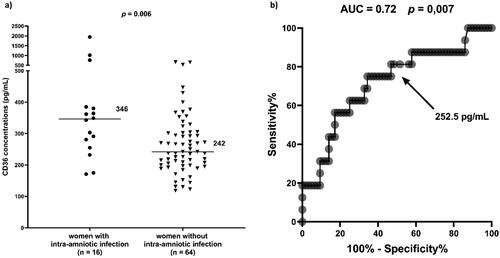Figures & data
Table 1. Maternal and clinical characteristics of women with preterm prelabor rupture of membranes based on the presence and absence of intra-amniotic infection.
Table 2. Maternal and clinical characteristics of women with spontaneous preterm labor with intact membranes based on the presence and absence of intra-amniotic infection.
Table 3. Microbial species identified in the amniotic fluid of women with preterm prelabor rupture of membranes and spontaneous preterm labor with intact membranes.
Data availability statement
The data that support the findings of this study are available from the corresponding author, [Ondrej Soucek], upon reasonable request.


